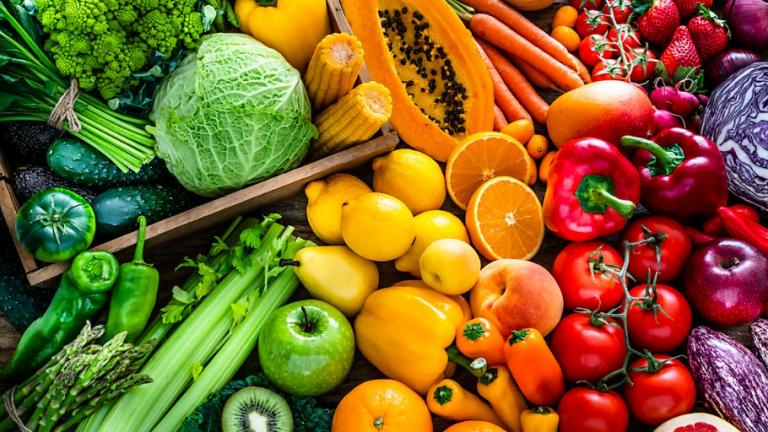In an observational study published in Circulation, adults who consumed five servings of fruits and vegetables each day were less likely to die early – specifically, they had a lower risk of overall death and from dying of cancer, cardiovascular disease, and respiratory disease.
The researchers reviewed the health and diets of more than 100,000 men and women followed for 28-30 years in the Nurses’ Health Study and the Professionals Follow-up Study. Participants shared information about their diet and health every two to four years. Then, the researchers combined results from these reviews with data from multiple studies worldwide. Adults who consumed about three daily servings of vegetables, such as half a cup of steamed spinach, and two daily servings of fruit, like a banana or half a cup of strawberries, were less likely to die early compared to participants who consumed fewer fruits and vegetables. Most fruits and vegetables counted, especially green leafy vegetables, like kale; non-starchy vegetables, such as red peppers; cruciferous vegetables, including broccoli; citrus fruit, such as oranges; and fruits and vegetables rich in beta-carotene, including carrots. Fruit juice and starchy vegetables, like peas and potatoes, weren’t associated with a lower risk of premature death. Eating more than five daily servings of fruits and vegetables didn't correlate with a lower risk of an early death in this study, which the authors note may be due to thresholds with how many nutrients the body can store and use.
The authors conclude their findings support dietary recommendations to increase fruit and vegetable consumption, which align with “5-a-day” and “Fruit and Veggies – More Matters” campaigns. The study was supported by the National Heart, Lung, and Blood Institute, the National Cancer Institute, and the National Institute of Diabetes and Digestive and Kidney Disease.


